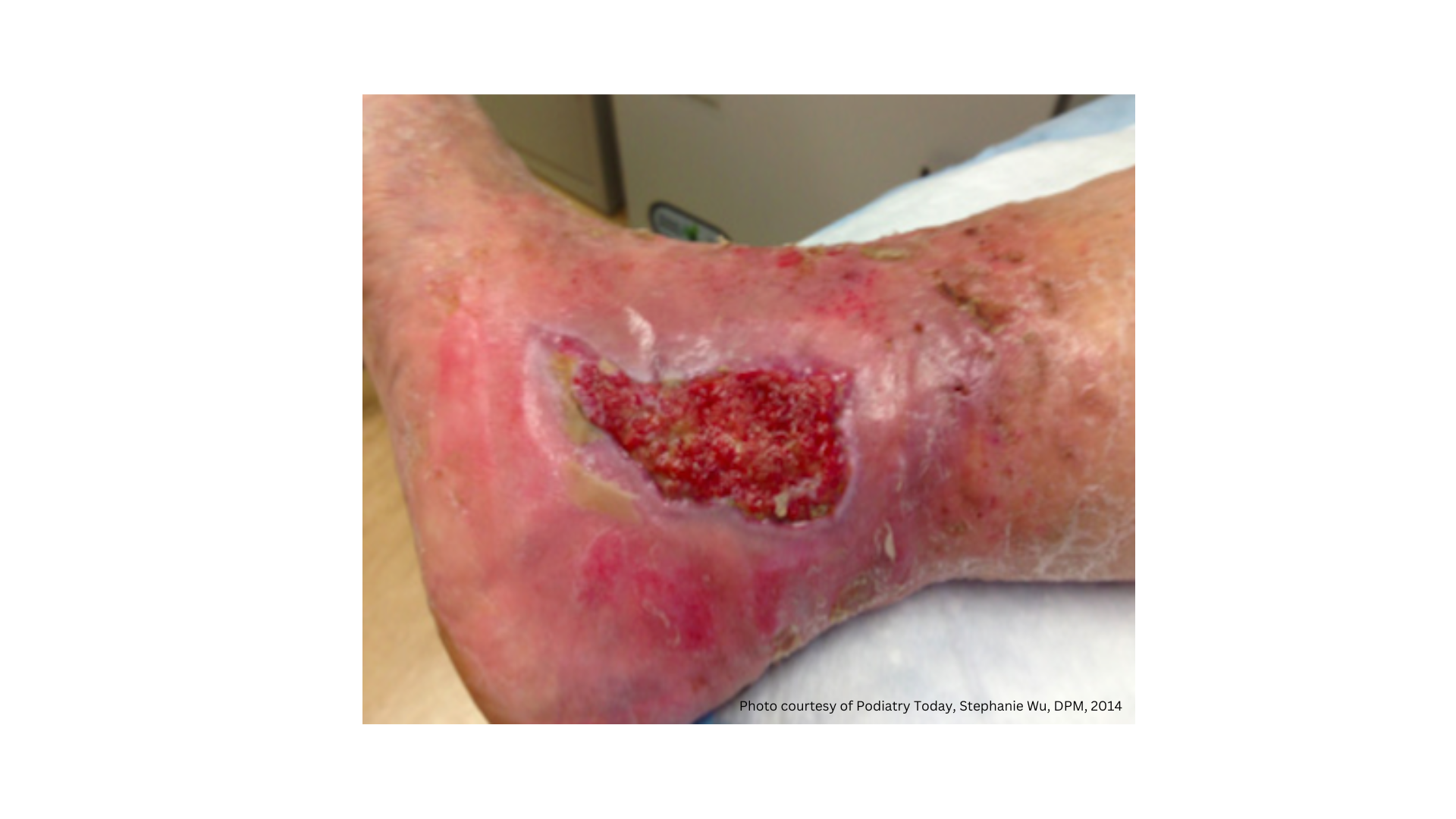
Apligraf®
Apligraf® a bioengineered living cellular skin substitute, FDA-approved for the healing of venous leg ulcers and diabetic foot ulcers.

Organogenesis
Organogenesis is a global leader in advanced wound care, offering a comprehensive portfolio of regenerative medicine products capable of supporting patients from early in the wound healing process through to wound closure, regardless of wound type.Benefits
• Stimulates healing due to its tissue engineered structure, which includes an outer layer of living keratinocytes and stem cells and an inner layer of living fibroblasts contained within a collagen matrix
• Mechanism of action clinical study demonstrated that living keratinocytes and fibroblasts produce potent healing signals to convert the wound from a chronic to an acute state
• Proven to heal more venous leg ulcers and diabetic foot ulcers faster in randomized controlled trials and in real-world observational studies
Indications
Apligraf® is indicated for use with standard therapeutic compression for the treatment of non-infected partial- and full-thickness skin ulcers due to venous insufficiency of greater than one month duration and which have not adequately responded to conventional ulcer therapy.
Apligraf® is also indicated for use with standard diabetic foot ulcer care for the treatment of full-thickness neuropathic diabetic foot ulcers of greater than three weeks duration which have not adequately responded to conventional ulcer therapy and which extend through the dermis but without tendon, muscle, capsule or bone exposure.
Contraindications
Apligraf® is contraindicated for use on clinically infected wounds. Contraindicated in patients with known allergies to bovine collagen or with a known hypersensitivity to the components of the Apligraf® agarose shipping medium.
Warnings and Precautions
If the expiration date or product pH (6.8-7.7) is not within the acceptable range DO NOT OPEN AND DO NOT USE the product. A clinical determination of wound infection should be made based on all of the signs and symptoms of infection. Please refer to the Apligraf® package insert for additional information.
Adverse Effects/Reactions
All reported adverse events, which occurred at an incidence of greater than 1% in the clinical studies, are listed in Table 1, Table 2 and Table 3 in the full package insert. These tables list adverse events both attributed and not attributed to treatment. Please refer to the Apligraf® package insert for additional information.
Storage Requirements
Apligraf® has been processed under aseptic conditions and should be handled observing sterile technique. It should be kept in its tray on the medium in the sealed bag under controlled temperature 68°F-73°F (20°C-23°C) until ready for use. Please refer to the Apligraf® package insert for additional information.
How Supplied/Sizing
HCPCS Code
Product features
Other features
Recommended Use
Diabetic Foot Ulcers
Venous Leg Ulcers
Mode of Use/Application
Apligraf® should be applied to a clean, non-infected, debrided wound after thoroughly irrigating the wound with a non-cytotoxic solution.
Before opening the Apligraf® package, check the expiration date and pH to ensure it is within range.
Open the package and remove Apligraf® using an aseptic technique.
Apligraf® must be used within 15 minutes of opening.
Apligraf® rests on a polycarbonate membrane. Be sure not to inadvertently remove it with Apligraf®.
Place Apligraf® directly over the wound, glossy side down, so the edges overlap with the wound edges.
Using a saline-moistened cotton tip applicator, smooth Apligraf® onto the wound bed so there are no pockets or wrinkled edges.
Adequately secure Apligraf® to ensure contact with the wound bed.
Cover Apligraf® using a non-adhesive primary dressing.
Apply a secondary non-occlusive dressing to create a bolster.
Upon complete wound closure, patients with venous leg ulcers should continue with compression therapy and patients with diabetic foot ulcers should continue to wear appropriate pressure relieving footwear and utilize other ulcer preventive foot care practices. Please refer to the Apligraf® package insert for additional information.
Clinically Tested
Not made with natural rubber latex
No posters match your selected filters. Remove some filtres, or reset them and start again.
Have a product to submit?
Be included in the most comprehensive wound care products directory
and online database.
Learn More











